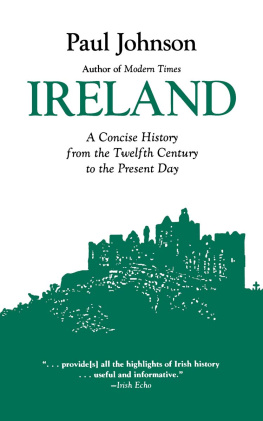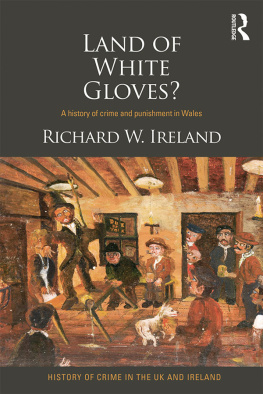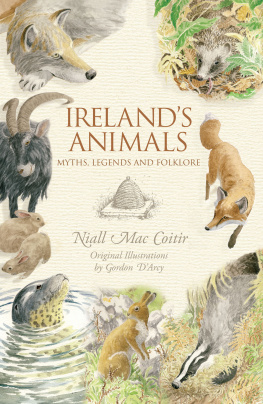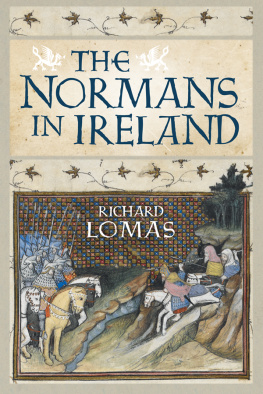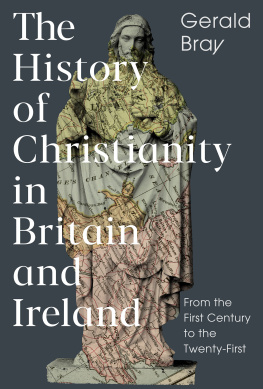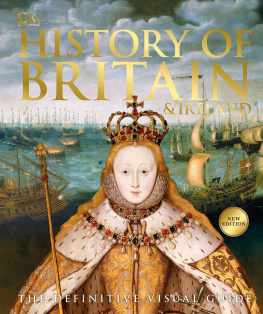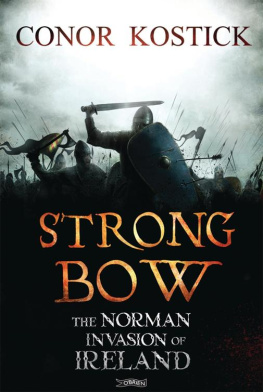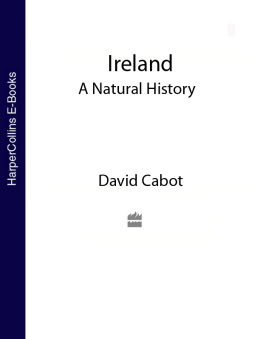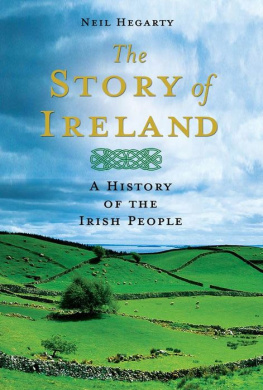
THE HISTORY AND TOPOGRAPHY OF IRELAND
ADVISORY EDITOR: BETTY RADICE
GERALD OF WALES, one of the formidable Geraldines, a grandson of Gerald de Windsor and the Princess Nest, was born c. 1146 in Manorbier, Pembrokeshire. He died in obscurity in 1223, possibly in Lincoln. Three parts Norman and one part Welsh, he was one of the most dynamic and colourful churchmen of the twelfth century. His dream was that he might become Bishop of St Davids, be consecrated without having to acknowledge the supremacy of Canterbury and then persuade the Pope to appoint him Archbishop of Wales. For this he fought with great courage and tenacity over the years, refusing four other bishoprics in Ireland and Wales, and preferring to remain Archdeacon of Brecon if he could not realize his grand design. He knew almost everyone worth knowing in his day, kings, popes, Welsh princes, prelates; he argued his case with most of them and he criticized them with some venom in his writings. He wrote seventeen books and planned a number of others, all in Latin. The Journey through Wales and The Description of Wales (Penguin Classics), obvious counterparts to each other, are among his more amiable works. Gerald was a member of one of the leading Norman families involved in the invasion of Ireland, which he first visited in 1183. His History and Topography of Ireland is an account of that country and its early history as seen by a Norman in A.D. 1185, and is an invaluable source of Irish history of the whole of the Middle Ages.
JOHN OMEARA was born in Eyrecourt, County Galway, Ireland, in 1915 and was educated at University College, Dublin, and Oxford University. He was Professor of Latin at University College, Dublin, from 1948 to 1984, has been a Member of the Institute for Advanced Study, Princeton, N.J., and held a Fellowship from Harvard University at Dumbarton Oaks Byzantine and Mediaeval Humanities Research Center in Washington, D.C., from 1979 to 1984. He was Director of Studies on Johannes Scottus Eriugena at the Royal Irish Academy from 1984 to 1989, and has been a Research Associate in Classics at Trinity College, Dublin, since 1984. Among his published works are The Young Augustine, Porphyrys Philosophy from Oracles in Augustine, Charter of Christendom: The Significance of the City of God and Eriugena.
The history and Topography of Ireland

GERALD OF WALES
Translated with an Introduction by John J. OMeara
PENGUIN BOOKS
PENGUIN BOOKS
Published by the Penguin Group
Penguin Books Ltd, 80 Strand, London WC2R 0RL, England
Penguin Putnam Inc., 375 Hudson Street, New York, New York 10014, USA
Penguin Books Australia Ltd, 250 Camberwell Road, Camberwell, Victoria 3124, Australia
Penguin Books Canada Ltd, 10 Alcorn Avenue, Toronto, Ontario, Canada M4V 3B2
Penguin Books India (P) Ltd, 11 Community Centre, Panchsheel Park, New Delhi 110 017, India
Penguin Books (NZ) Ltd, Cnr Rosedale and Airborne Roads, Albany, Auckland, New Zealand
Penguin Books (South Africa) (Pty) Ltd, 24 Sturdee Avenue, Rosebank 2196, South Africa
Penguin Books Ltd, Registered Offices: 80 Strand, London WC2R 0RL, England
www.penguin.com
First published by the Dundalgan Press 1951
Revised edition published by the Dolmen Press 1982
Published in Penguin Books 1982
This translation copyright John OMeara, 1951, 1982
All rights reserved
Except in the United States of America, this book is sold subject
to the condition that it shall not, by way of trade or otherwise, be lent,
re-sold, hired out, or otherwise circulated without the publishers
prior consent in any form of binding or cover other than that in
which it is published and without a similar condition including this
condition being imposed on the subsequent purchaser
ISBN: 978-0-14-191556-2
CONTENTS
ILLUSTRATIONS
The twelfth-century map of Europe on page 21 and the line drawings in the text are copies of the coloured illustrations in the manuscript in the National Library of Ireland (MS 700).
The modern map on page 22 was drawn for this edition by Reg Piggott, by permission of the Ordnance Survey of Ireland.
FOREWORD
IN THIS NEW and revised edition of the translation published by the Dundalgan Press in 1951 of Giraldus Cambrensis work, sometimes called History, sometimes Description and sometimes Topography of Ireland, I have thought it preferable to follow rather more closely my edition of the first recension of the Latin text in the Proceedings of the Royal Irish Academy, 52 C 4, 1949. I give, for example, the original list of contents (with its occasional discrepancies from the headings found in the body of the text), and the marginalia, which comment rather haphazardly on the text from time to time. I have also kept the proper names as they appear in the edition of the Latin text, except where to do so would seem rather artificial; but I have tried to help the reader, where he was likely to have difficulty, in the Notes. The choice of illustrations from MS 700 of the National Library has also been varied to harmonize with this edition.
Although my translation was more than favourably received, I have made a number of corrections and have had, of course, to add a few bibliographical items to give some direction to the reader of today. I gratefully record my indebtedness to the work of two colleagues in University College, Dublin: F. X. Martin, Gerald of Wales, Norman Reporter, Studies, 1969; and M. Richter, Giraldus Cambrensis, Aberystwyth, 1972, and Gerald of Wales, Traditio, XXIX, 1973. The volume Speculum Duorum (of which M. Richter was general editor), Cardiff, 1974, has been very useful. I am particularly grateful to Dr Richter for suggested corrections incorporated in the present edition.

INTRODUCTION
GIRALDUS DE BARRI, called Cambrensis from Cambria (Wales), the country of his birth, was born at the castle of Manorbier, in Pembrokeshire, about A.D. 1146. His father was William de Barri, whose ancestors had taken their name from the little island of Barri, off the coast of Glamorganshire. His mother was Angharad, daughter of Nest who was the celebrated mistress of Henry I and was described as the Helen of Wales. Through her marriage with Gerald de Windsor, castellan of Pembroke, Nest had become the mother of the first members of the illustrious and powerful Norman family of the fitzGeralds. Among her other children were David fitzGerald, later bishop of St Davids, and Maurice fitzGerald, one of the principal leaders of the Norman invasion of Ireland. Here I describe no more of Giraldus life and works than will provide a brief context for his Topography of Ireland.
Little is known of his early upbringing and education. Indeed J. S. Brewer in his introduction to the first volume of Giraldus works (Giraldi Cambrensis Opera, Rolls Series, 1861) is of the opinion that Giraldus could have got very little learning in Wales, either from the Welsh or the Normans there. But he does tell us himself in his




